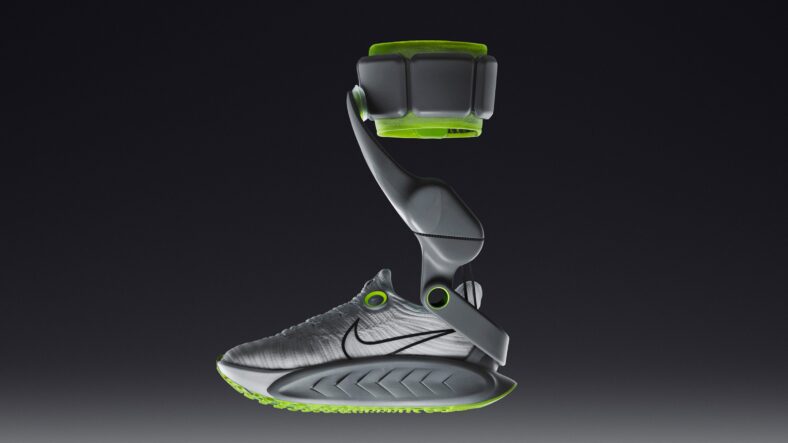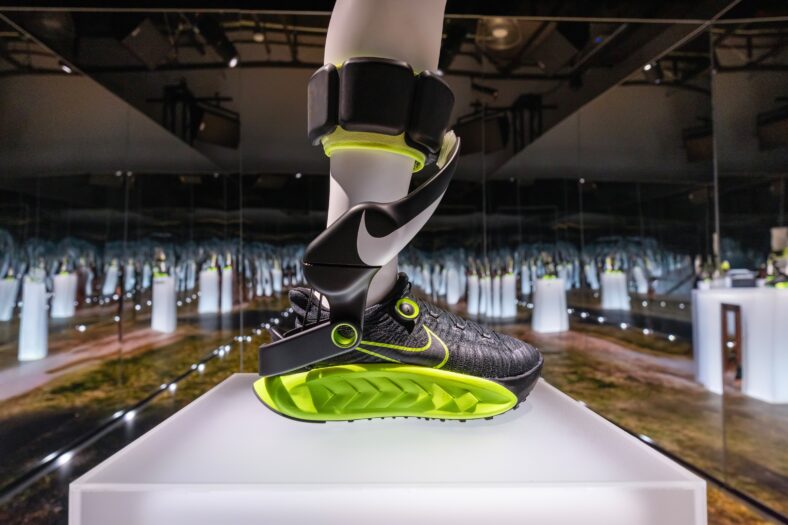
Nike is taking a step forward into the future with what’s been dubbed Project Amplify, “the world’s powered footwear system for running and walking.” The apparatus was designed by the athleticwear behemoth and Dephy Bionics, a tech company specializing in exoskeletal shoes that aid consumers, rehab patients, and even soldiers’ movement.
Nike’s Project Amplify is designed for the consumer market. The first generation features a motor, drive belt and rechargeable cuff battery that connects to a carbon-fiber plated running shoe. Together, these act like “a second set of calf muscles,” as Nike puts it, reducing the human effort exerted a la a bicycle with an electronic pedal assist. In its current iteration, Project amplify is designed for those who run at between a 10- and 12-minute mile pace to go farther and faster with less effort—and have fun while doing so.

In a statement, Nike executive Michael Donaghu said, “Project Amplify started with a single question: What if we could find a way to help athletes”—Nike defines “athlete” as literally everyone—”move faster and farther with less energy and a lot more fun? At its core, Project Amplify is about seamlessly adding a little more power to your stride. The fun comes from realizing you can do more than you thought you could—whatever ‘more’ means to you.”
Though it’s still in the testing phase, Project Amplify has been run through quite a few paces. More than 400 athletes of various abilities have covered a combined 12,000 laps at the Nike Sport Research Lab’s 200-meter track in more than nine different versions of the hardware. Nike has noted anecdotes from testers who say the system feels integrated with their body and makes running uphill feel like moving on flat ground.

No word on when Project Amplify might arrive on the consumer market, but it’s safe to that Nike and Dephy are a step ahead of the rest when it comes to movement-augmenting wearables.














